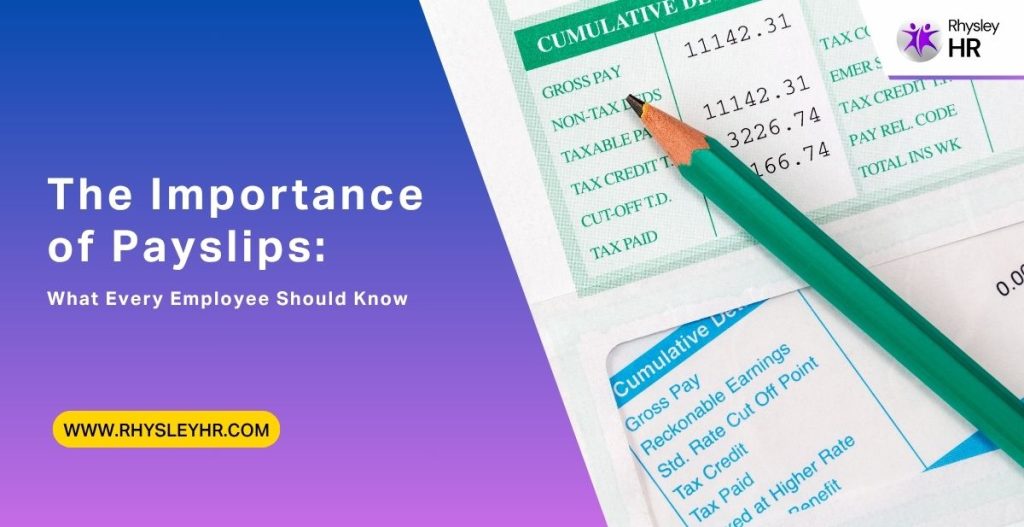Explore all premium features with a 1-Year Free Trial. Schedule your demo NOW!

The Importance of Pay Slips: What Every Employee Should Know
Your payslip is like your personal financial fingerprint — a detailed record that shows much more than just your salary. It reveals your total earnings, as well as all the deductions, taxes, and benefits that affect what you actually take home. This small document holds the key to understanding your true earning power.
In today’s world, your salary slip is important for managing your finances. It helps you when applying for a home loan, proves your income during job discussions, and provides clarity for better money planning. Whether you’re reviewing a 3-month pay slip to spot earning trends or understanding your employee benefits, knowing how to read your payslip is now a vital skill.
Thanks to HRMS softwares, accessing your payslip has become simple and quick. With just a few clicks, you can see a detailed breakdown of your earnings, track deductions, and understand the impact of taxes. This makes it easier to stay on top of your finances and make informed decisions each month.
What Is a Pay Slip?
A payslip, also referred to as a salary slip, is a formal document provided by your employer during each payroll cycle—whether that’s monthly, biweekly, or weekly. This document serves as a comprehensive summary of your earnings and deductions, offering complete transparency about your financial compensation.
Key Components of a Payslip:
Gross Salary:
Your total earnings before deductions, including basic pay and allowances like HRA or conveyance.
Deductions:
Amounts subtracted from your salary, such as income tax (TDS), provident fund (PF), and insurance premiums.
Net Pay:
The final amount you receive after all deductions—your actual take-home salary.
Tax Details:
Information on taxable income, exemptions, and monthly tax deductions to help with tax planning.
Employee Benefits:
Additional income such as bonuses, overtime, reimbursements, and gratuity contributions.
With digital tools like RhysleyHR, payslips are generated automatically and securely shared through a self-service portal. This allows employees to easily view and download their payslips anytime, ensuring full transparency and easy access when needed for tax filing, loans, or personal records.
Why Payslips Are Important
Financial Transparency
Payslips clearly show how your gross pay is calculated and where deductions go. This prevents misunderstandings and empowers you to verify accuracy each month.
Proof of Income
Banks, landlords, and government bodies often require 3 months salary slip copies to prove your earnings for loan applications, visas, or rental agreements.
Tax Compliance
Payslips document TDS or tax deductions monthly, helping you reconcile your Form 26AS and Form 16 during tax season.
Access to Benefits
A detailed employee benefits salary slip helps you track incentives like bonuses, reimbursements, gratuity accruals, and more.
Dispute Resolution
Payslips serve as evidence in disputes over unpaid wages, incorrect deductions, or discrepancies in attendance.
Loan & Credit Applications
Lenders require payslips (typically the last 3 months) to assess income stability, so having them ready is vital.
HR Automation & Security
With ESS portals like those in RhysleyHR, you can retrieve password‑protected payslips anytime—no paper trail, no delay.
3 Months Salary Slip : Why It Matters
Lenders and financial institutions often ask for your last three months’ payslips when you’re applying for a loan or credit. This helps them verify that your income is steady and assess your ability to repay. Having these documents ready can make the approval process much smoother.
When reviewing a salary slip, here’s what you should look out for:
- Bonuses, commissions, and overtime pay.
- Allowances like meal, transport, or housing stipends.
- Reimbursements for travel or work-related expenses.
- Gratuity accruals, especially if you’re eligible after reaching certain service milestones.
Keeping track of these details ensures you’re aware of all the benefits you’re entitled to and helps you plan your finances more transparently.
Frequently Asked Questions
What is a payslip and what information does it contain?
A payslip (or salary slip) outlines your gross earnings, itemized allowances, deductions (taxes, insurance), net pay, and additional benefits like overtime, bonuses, reimbursements, and gratuity accruals.
Why are payslips important for employees?
Payslips ensure you’re paid accurately, allow you to track benefits, help with tax compliance, support accountability in case of disputes, and serve as proof of income for financial services.
How can a payslip help when applying for a loan or credit card?
Banks and lenders require your 3 months salary slip to check stable income and repayment capability. A payslip confirms your monthly earnings and employment status.
How long should I keep my old payslips?
- For tax purposes: Keep at least 6 years (common in many jurisdictions).
- For loans or rentals: 1–3 years, depending on usage.
- For legal disputes: Retain until resolved.
Digital ESS systems simplify this by allowing secure, on‑demand access to historical payslips—no paper clutter.